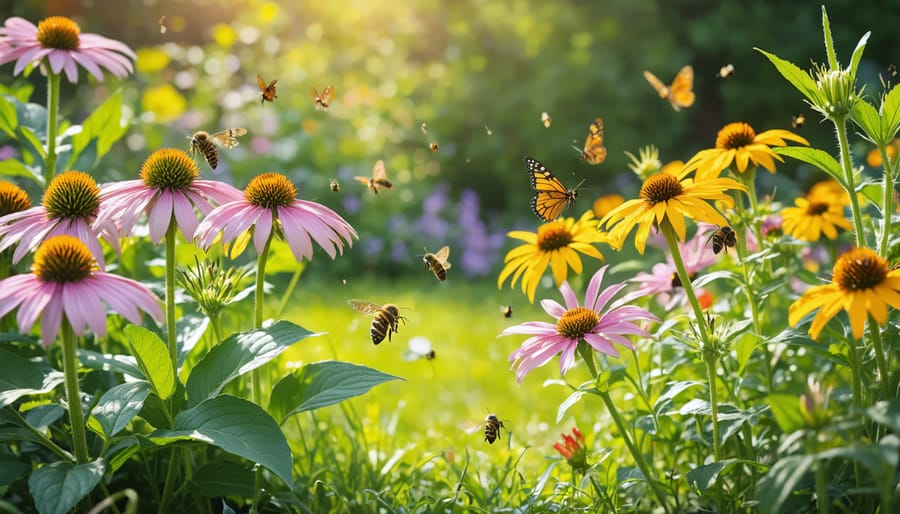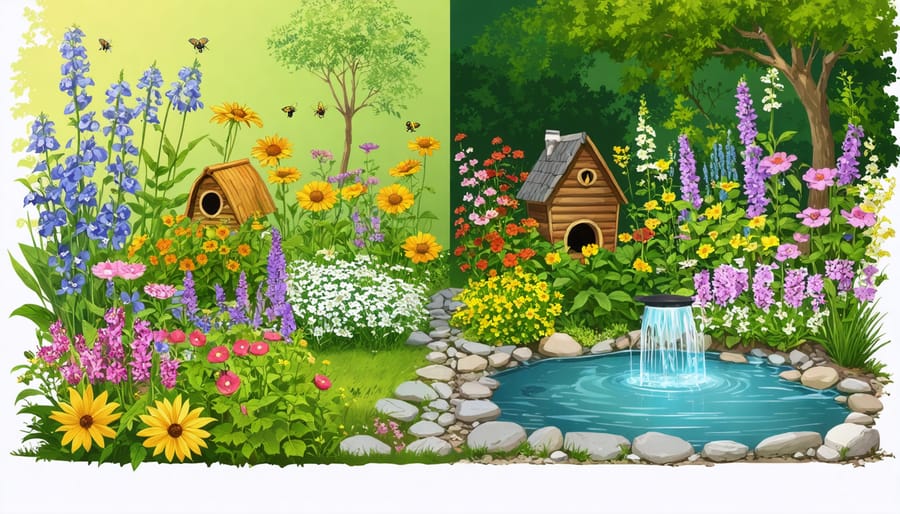Transform your garden into an eco-conscious sanctuary by switching to biodegradable landscape fabric – a revolutionary alternative that aligns perfectly with earth-friendly gardening practices. Unlike traditional synthetic weed barriers that languish in landfills for decades, these natural materials break down over time, enriching your soil while effectively suppressing weeds. Made from organic materials like jute, hemp, or coconut fiber, biodegradable landscape fabric offers the same weed-blocking benefits as conventional options but decomposes naturally within 1-2 growing seasons, contributing valuable organic matter to your garden beds. For environmentally conscious gardeners seeking lasting solutions, this innovative approach eliminates the need for synthetic materials while maintaining garden aesthetics and functionality, making it an increasingly popular choice among those committed to sustainable landscaping methods.
The Environmental Impact of Traditional vs. Biodegradable Landscape Fabric
What’s Wrong With Traditional Landscape Fabric?
Traditional landscape fabric, while once considered a garden essential, comes with several significant drawbacks that many gardeners have discovered the hard way. The most concerning issue is its environmental impact – these fabrics are typically made from non-biodegradable synthetic materials that break down into microplastics, contributing to soil and water pollution.
Over time, traditional landscape fabric actually prevents natural soil enrichment by blocking organic matter from reaching the soil below. This creates a barrier that stops beneficial organisms like earthworms from doing their important work of aerating and enriching your garden soil. The fabric also tends to compact the soil underneath, making it harder for plant roots to grow properly.
Another frustrating problem is that these materials don’t last as long as advertised. They often begin deteriorating within a few years, creating an unsightly mess that’s difficult to remove. As they break down, pieces of plastic become entangled with plant roots and mixed into the soil, making cleanup nearly impossible. Even worse, when weeds eventually grow through or on top of the fabric, their roots become intertwined with the material, making them even harder to remove than if you had no fabric at all.
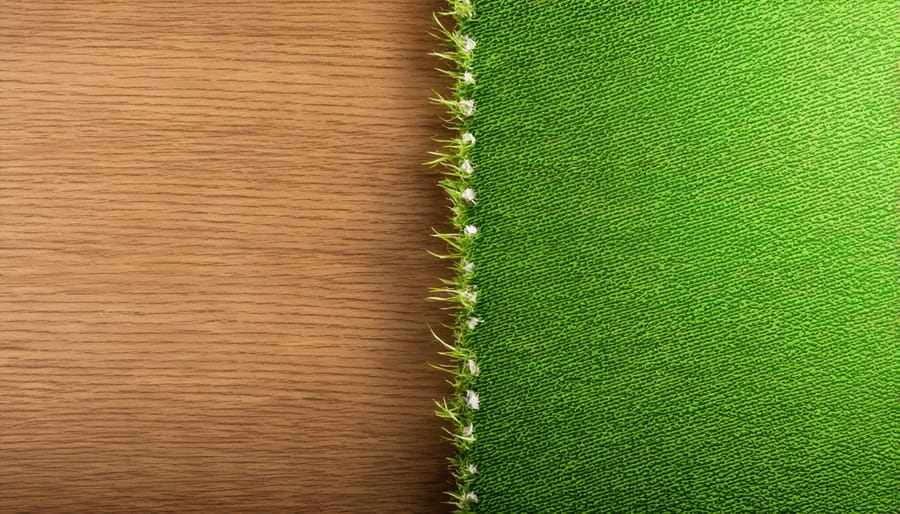
Materials That Make Biodegradable Fabric Earth-Friendly
When it comes to earth-friendly gardening solutions, biodegradable landscape fabric is made from several natural materials that break down harmlessly over time. The most common material is jute, a strong plant fiber that’s both durable and completely natural. You’ll also find options made from coconut coir, which offers excellent water permeability while suppressing weeds effectively.
Hemp-based fabrics are gaining popularity for their strength and sustainability, while wool felt provides natural weed control and helps retain soil moisture. Many gardeners love burlap for its versatility and affordability – it’s perfect for temporary landscaping projects and slope stabilization.
These materials typically decompose within 1-2 growing seasons, enriching your soil as they break down. Unlike synthetic fabrics, they don’t leave behind microplastics or harmful residues. Some varieties even come enhanced with natural fertilizers that feed your soil as they decompose.
Look for certifications that ensure the materials are truly biodegradable and free from synthetic additives. The best part? These natural alternatives work just as effectively as traditional landscape fabric while being kinder to our environment.
Benefits Beyond Sustainability
Weed Control That Works
When it comes to controlling weeds, biodegradable landscape fabric proves remarkably effective, especially during the critical establishment period of your garden. The dense, woven structure creates a physical barrier that blocks sunlight from reaching weed seeds, preventing their germination while still allowing water and nutrients to reach your desired plants.
Most gardeners report excellent weed suppression for 12-18 months, which is typically long enough for desirable plants to establish strong root systems and naturally crowd out unwanted growth. The fabric works particularly well when combined with a light layer of organic mulch, creating a double barrier against persistent weeds.
While no weed control method is perfect, biodegradable fabric excels at suppressing annual weeds and significantly reducing perennial weed growth. As the fabric gradually breaks down, your established plants will have developed enough strength to naturally compete with any emerging weeds. This creates a sustainable, long-term solution that works with nature rather than against it.
For best results, ensure proper installation by overlapping edges and securing the fabric firmly to prevent aggressive weeds from finding gaps to exploit.
Soil Health Improvements
Unlike traditional landscape fabric that can harm soil quality over time, biodegradable options actually help improve soil health as they decompose. As the fabric breaks down naturally, it adds valuable organic matter to your garden soil, similar to how fallen leaves enrich forest floors. The decomposition process encourages beneficial microorganism activity, which creates a thriving soil ecosystem.
The fabric’s gradual breakdown also helps improve soil structure by creating tiny pockets for air and water movement. This enhanced soil structure leads to better root development for your plants and improved drainage. Additionally, the decomposing material releases nutrients slowly, acting like a time-release fertilizer for your garden.
Many gardeners report that areas where biodegradable fabric has completely broken down show noticeably darker, richer soil with improved moisture retention. This natural soil enhancement process typically takes 1-2 growing seasons, depending on your climate and soil conditions.
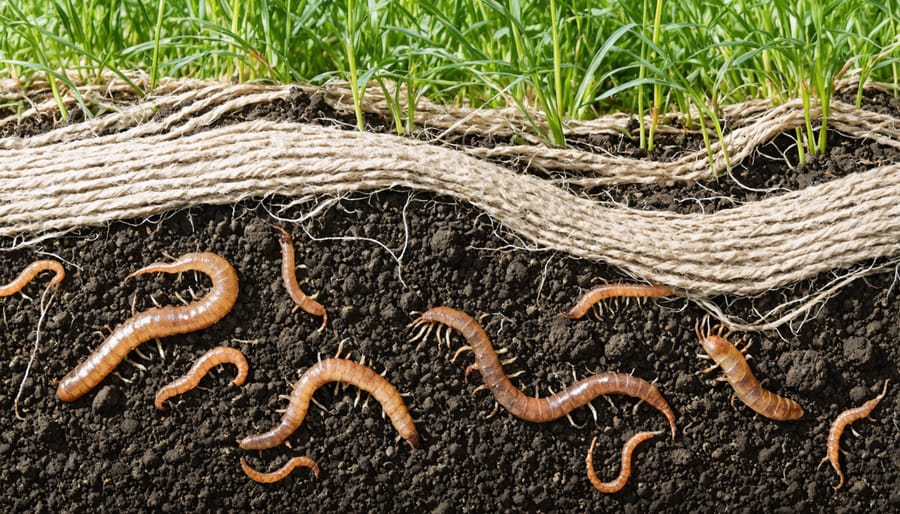
Water Management Benefits
Biodegradable landscape fabric offers excellent moisture management benefits that can significantly improve your garden’s health. The material’s natural fibers create an ideal balance between water retention and drainage, ensuring your plants receive consistent moisture without becoming waterlogged. Unlike synthetic alternatives, these eco-friendly barriers allow for efficient water management while maintaining soil health.
During heavy rainfall, the fabric’s porous structure lets excess water seep through while retaining enough moisture for dry spells. This natural filtering process helps prevent soil erosion and maintains proper hydration levels for your plants’ root systems. As the fabric gradually breaks down, it enhances the soil’s ability to retain moisture, creating a self-sustaining cycle that benefits your garden long-term.
What’s particularly wonderful is how the fabric works with nature rather than against it, allowing beneficial organisms to move freely while helping conserve water – a win-win for both your garden and the environment!
Installation and Maintenance Tips
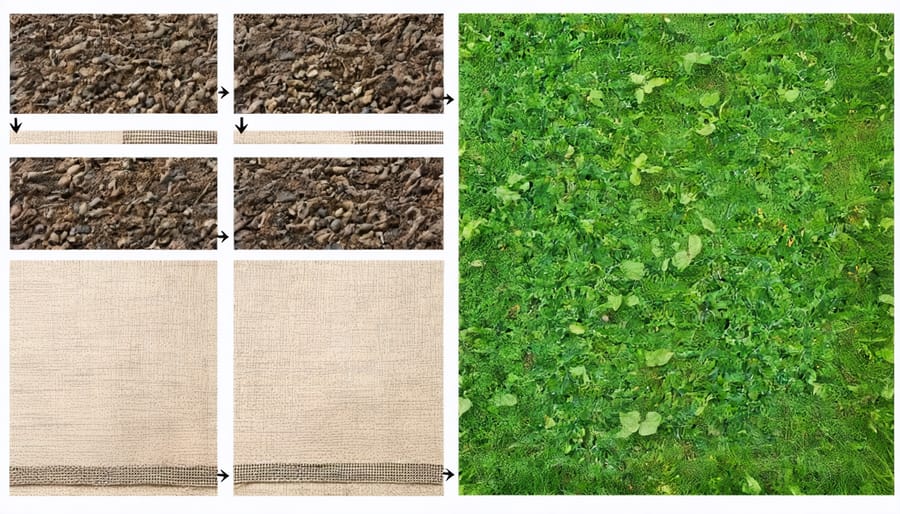
Proper Installation Steps
Installing biodegradable landscape fabric is straightforward when you follow these simple steps. Start by clearing your garden area of weeds, rocks, and debris. Smooth the soil surface with a rake, removing any sharp objects that could potentially tear the fabric.
Roll out your biodegradable landscape fabric, allowing it to rest in the sun for about 15 minutes to help remove any wrinkles. Position the fabric so it covers your desired area, leaving an extra 6 inches around the edges for secure anchoring. If you need to cover a larger area, overlap separate pieces by at least 6 inches to prevent weed growth between sections.
Secure the fabric using biodegradable stakes or U-shaped pins made from natural materials. Place these every 2-3 feet along the edges and seams. For added stability in windy areas, consider placing a few stakes in the middle section as well.
Cut X-shaped slits in the fabric where you plan to plant, making them just large enough to accommodate your plants. When adding mulch on top, spread it evenly at a depth of 2-3 inches, being careful not to disturb the fabric’s positioning.
For best results, install the fabric on a calm, dry day. Remember that unlike traditional landscape fabric, biodegradable versions will naturally break down over time, enriching your soil while suppressing weeds during your plants’ establishment period.
Long-term Care and Monitoring
While biodegradable landscape fabric naturally breaks down over time, proper maintenance can help you get the most value from your investment. Check the fabric every few months for signs of premature degradation or areas where it might be exposed. If you notice any corners lifting, secure them promptly with biodegradable stakes to prevent further damage.
Keep the fabric’s surface clear of debris and fallen leaves, as these can decompose on top and speed up the breakdown process. When adding new mulch layers, do so gently to avoid accidentally tearing or disturbing the fabric underneath. Most biodegradable landscape fabrics last between 1-3 years, depending on your climate and soil conditions.
You’ll know it’s time to replace the fabric when you notice significant deterioration, such as large holes or areas where weeds are readily pushing through. Some gardeners choose to let the fabric completely decompose into the soil rather than removing it, as this adds organic matter to your garden. If you decide to replace it, the best time is usually early spring or fall when you’re doing other major garden maintenance.
Remember that the fabric’s decomposition rate varies based on moisture levels, temperature, and microbial activity in your soil. In particularly wet climates, you might need to replace it more frequently than in drier regions.
Making the Switch: What to Consider
Making the switch to biodegradable landscape fabric requires thoughtful planning to ensure a successful transition. First, consider your garden’s specific needs and timeline. Since these fabrics naturally break down over time, you’ll want to plan your garden layout with decomposition rates in mind – typically 2-5 years, depending on the material and conditions.
Take stock of your existing plants and their growth patterns. Some vigorous growers might need more frequent fabric replacement, while slower-growing areas can work well with longer-lasting varieties. Budget considerations are also important; while biodegradable options might cost slightly more upfront, they eliminate future removal costs and benefit your soil’s health.
Weather patterns in your area play a crucial role too. In particularly wet regions, you might need to choose more durable biodegradable options or plan for more frequent replacement. Consider installing your fabric during dry weather to ensure proper soil contact and effectiveness.
Before making the switch, prepare your soil well by removing existing weeds and adding any necessary amendments. This preparation helps ensure your biodegradable fabric performs optimally from the start, giving your garden the best chance of success.
Choosing biodegradable landscape fabric represents a significant step toward more sustainable gardening practices. By opting for these eco-friendly alternatives, you’re not only protecting your garden from weeds but also contributing to a healthier environment. Remember that successful implementation involves proper installation, regular monitoring, and understanding that these materials will naturally break down over time – which is exactly what makes them environmentally friendly. Consider combining biodegradable fabric with organic mulch for optimal results, and always prioritize soil health in your gardening decisions. As more gardeners embrace sustainable solutions, we’re collectively creating greener, more responsible gardens that benefit both our plants and the planet. Whether you’re a seasoned gardener or just starting, incorporating biodegradable landscape fabric into your garden design is a wonderful way to align your gardening passion with environmental stewardship.


